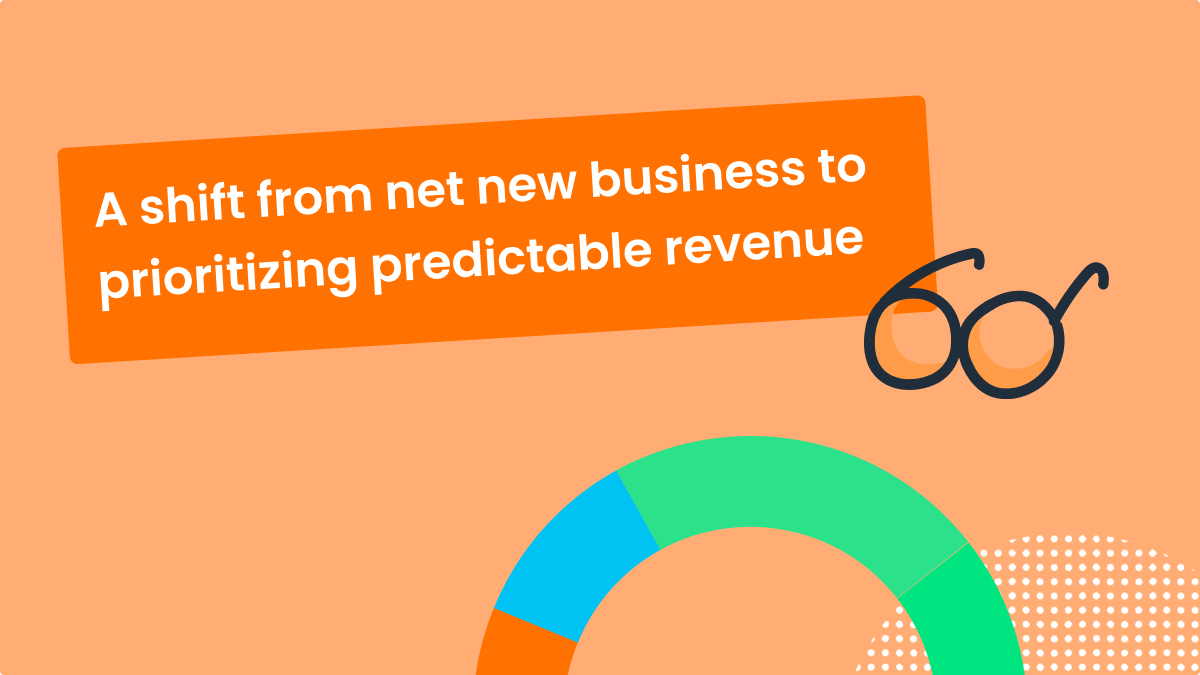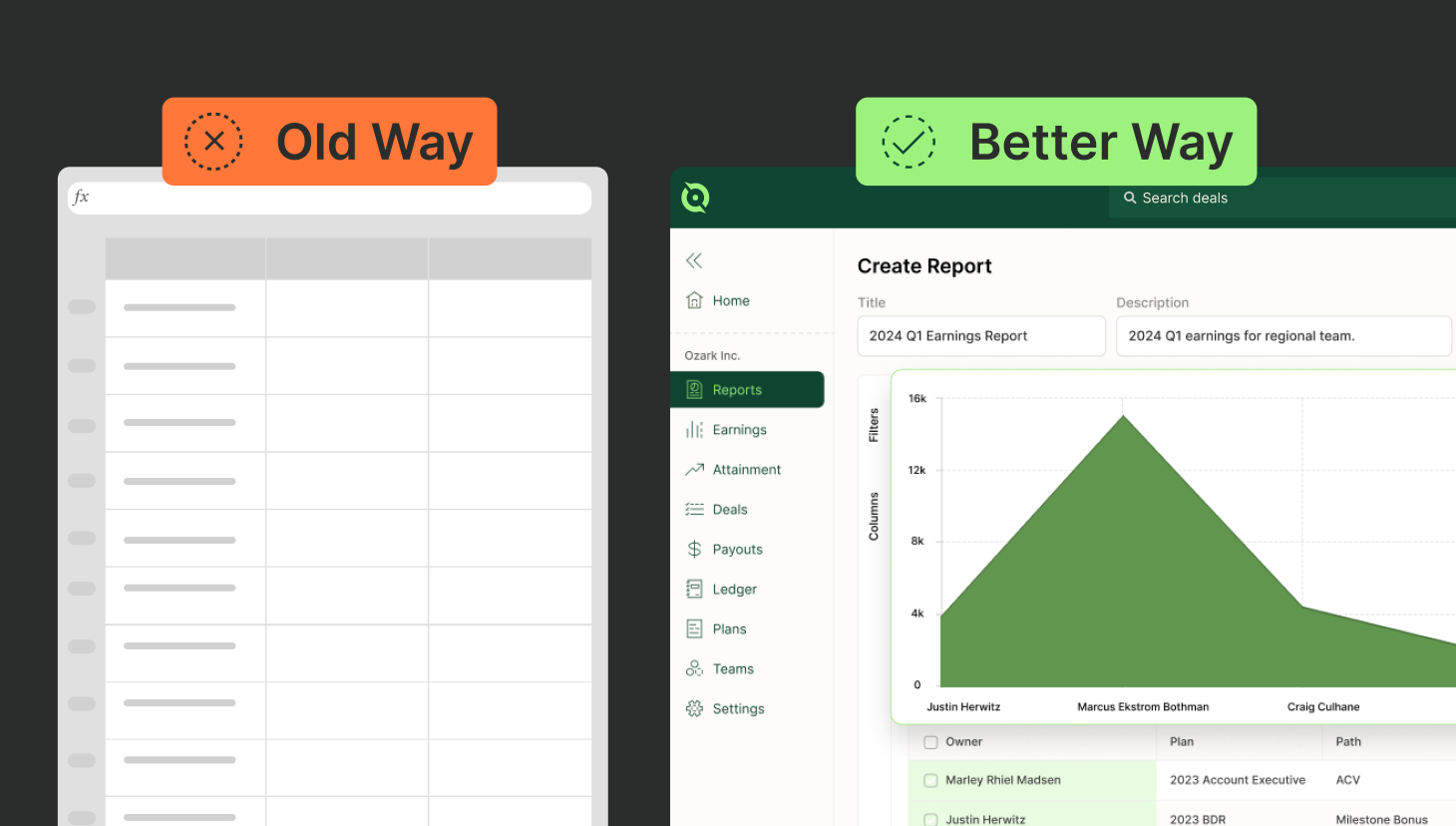Amid the business changes of 2023, sales compensation shifts have also been plentiful.
Through our sales compensation consulting and work with our customers, we’ve observed five key trends since the start of the year.
One of the more significant shifts we’ve noticed is an industry-wide move away from focusing supremely on net new business. Instead, organizations have prioritized other metrics that generate predictable revenue.
We’ve also seen an increase in the multipliers of commission rates for accelerators, which are rates higher than the base commission rate. Additionally, team-wide SPIFs and competitions have grown in popularity as have a push from SaaS companies toward multi-year deals.
These are just a few of the sales compensation shifts and trends we’ve noticed since the start of the year. We expect to see even more changes in the coming months, as companies continue to adapt to the changing sales landscape.
Below, we explore 5 key trends with some additional insights from leaders across the industry.
Streamline commissions for your RevOps, Finance, and Sales teams
Design, track, and manage variable incentives with QuotaPath. Give your RevOps, finance, and sales teams transparency into sales compensation.
Talk to Sales5. The rise in multi-year deals
To follow in stride with the tech industry’s move toward profitability and revenue predictability (and away from the “grow at all costs” mindset), many companies have adjusted their compensation plans to pay higher rates on multi-year contracts.
We call this a multi-year accelerator, which pays reps higher percentages on deals with contracts above 12 months.
So, if the average commission for technology sales is 10%, the rate for a deal above 12 months might be closer to 12 or 13%.
“Multi-year deals tend to be better for the company,” said Andrew de Geofroy, SVP, of Global Revenue Platform for Quantive. “With current economic conditions, predictable revenue growth is more important toward profitability.”
In practice, this may look like:
- 1-year contracts: 10%
- 2-year contracts: 12.5%
- 3-year contracts: 15%
As a result of implementing higher rates, companies tend to see an influx in multi-year deals.
However, one thing to note is that in order for your reps to pitch longer contracts, your commission rate has to be competitive enough for them to care. Meaning, you wouldn’t increase the commission rate by 1% if it only gives the rep an extra $50.
For comp plan templates that include multi-year commission structures, visit Compensation Hub.
4. CAC, LTV, Gross Margin, etc. replace Net New Biz
As part of the move from the “grow at all costs” mentality, we’ve also seen companies re-direct their focus toward business metrics that showcase a clear path to profitability vs. high-growth mode.
“Up funnel metrics, like customer acquisition cost (CAC), customer lifetime value (LTV), and gross revenue retention (GRR), play a role to show healthy signals toward profitability,” our VP of Finance Ryan Macia said.
To support these new metrics, leaders have built compensation structures that align accordingly.
“Show me the incentive and I’ll show you the outcome,” said Colin Spector, VP of Sales, Orum.
“Incentives drive behavior. If Finance says we want more cash flow upfront, then let’s put a kicker on annual payments. Let’s put an accelerator on deals that close within the first month of the quarter.”
Other compensation levers to pull include:
Solving for Retention
- Offer SPIFs on multi-year deals to test if it should become a permanent mechanic on your comp plan.
- Use higher rates for customer segments with higher retention rates (Ideal customer profiles vs Not)
Addressing Gross Margin
- Bonuses for full-price deals
- Lower commission rates, or decelerators, for lower-margin deals
Promoting Cash Flow
- Implement an accelerator or bonus for deals that include Net 30-60-90 day payment terms
- Adjust the time of commissions payouts from the day of the contract to when you receive the customer’s first invoice payment
3. Job postings and seekers’ behaviors
We’ve also seen two changes around job postings and the needs of job seekers. The first involves how forthcoming organizations are today with their on-target earnings (OTE) in job postings. The second entails a rise in job seekers’ requests for practical benefits over higher earnings.
Postings: For instance, we recently looked up account executive job openings throughout our headquarters city of Austin. Out of the first five openings, three included info from their sales compensation policy, such as base and commission earnings information:
- Role 1: Base + commission $100k Year 1 OTE and $150k+ Year 2 OTE
- Role 2: Salary Range: $65,000 – $75,000 USD Annually
- Role 3: The hiring base pay range for this position is between $90,900 and $130,000
This is a vast change from even a year ago when most companies would shy away from sharing earnings numbers on their job descriptions. And, frankly, we love to see it.
Push for practical benefits: As for what job seekers want, Bett’s Recruiting released a compensation report that showed they want practical benefits just as much (if not more) than higher compensation packages.
Practical benefits include:
- 100% health insurance
- Unlimited PTO
- Remote work/hybrid model
- Commuter benefits
- Increased 401K matching
- HSA
- Gym stipend
- Learning stipend
Create Compensation Plans with confidence
RevOps, sales leaders, and finance teams use our free tool to ensure reps’ on-target earnings and quotas line up with industry standards. Customize plans with accelerators, bonuses, and more, by adjusting 9 variables.
Build a Comp Plan2. Team competitions hold just as much importance as SPIFs
Our next trend involves a sales rep motivation principle. While SPIFs continue to drive immediate results and inspire short-term selling behaviors and quick wins, team competitions hold just as much importance.
For example, Mallorie Maranda, VP of Sales at WorkRamp, recently shared on a webinar with us that she found out via a companywide HR survey that her team said they’re most motivated by team competition and collaboration.
“I’ve been naive in the past that all sales reps are motivated by money,” said Mallorie. “That’s not always the case.”
So, upon finding this out, Mallorie implemented a team-wide SPIF.
“It was all or nothing. Everyone hits it they get it,” Mallorie said. “This created team bonding. We sent out the leaderboard each week, and if a teammate was pacing behind, they’d meet with someone who is over exceeding that metric and help them.”
Colin shared that he too implemented a team-wide competition to motivate and inspire his reps to make a push for Q2.
1. Accelerators multipliers have increased
Normally accelerators payout at a rate that is 1.5x the base commission rate. However, this year, we’re seeing multipliers closer to 2x that of the base rate.
Why?
“It allows you to hang on to your top-performing reps,” said QuotaPath’s Chief of Staff Graham Collins. “Your top performers tend to overperform, so by unlocking higher accelerators, you’re able to ensure they get paid more which means they’re more likely to stick around at your organization.”
These are especially important in situations where you might not be able to increase base salaries or offer promotions. By increasing accelerators, you’re finding a workaround.
For help tracking accelerators, use this free sales commission accelerator calculator.
***
What have you done to meet these sales compensation shifts and stay ahead of the curve?
About QuotaPath
For support, sales compensation consulting, and automated commission tracking software, try our free 30-day trial experience. The trial invites you to sync your CRM, like HubSpot or Salesforce, invite team members, and even run commission payments ahead of your next cycle.
Dive in, or schedule a time with our team to learn more.



